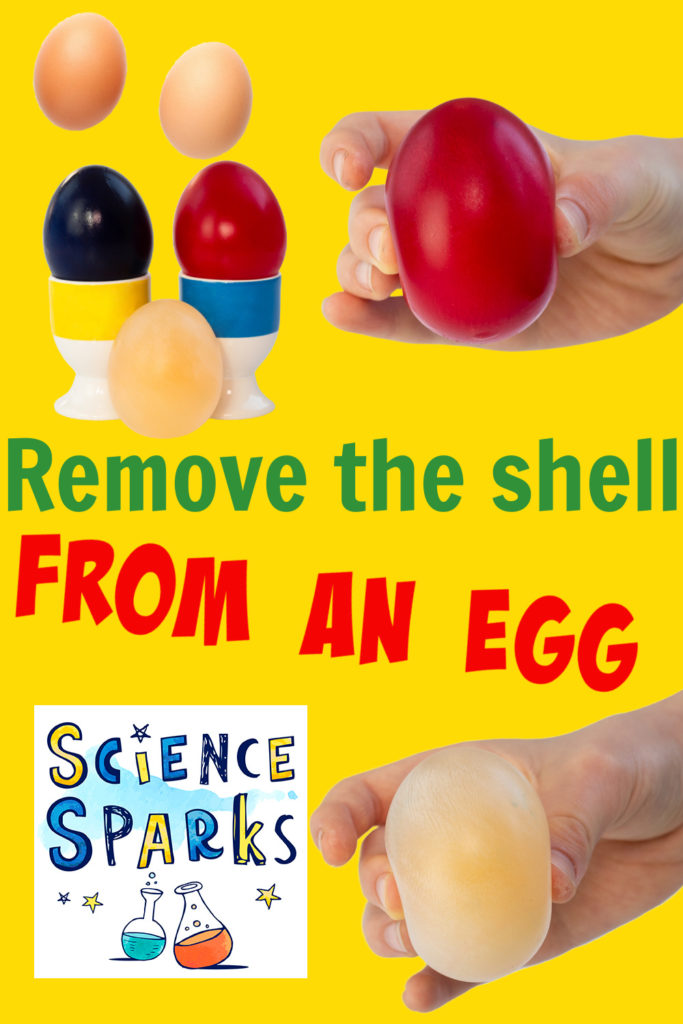Do you know how make a naked egg? It’s super simple and a great fun science experiment for kids of all ages. A naked egg is an egg with no shell. Can you imagine such a thing? The shell dissolves in vinegar, but the membrane stays intact.
Naked Eggs
What you need to make a naked egg
Raw eggs
Jar
Vinegar
How to remove the shell from an egg
Place a raw egg in a jar and completely cover with vinegar.
Leave for 24 hours and rinse gently under cold water, carefully rubbing away the shell. If there’s still some shell left, put the egg back in the vinegar and check again after a few hours.
The shell should rub off as a white powdery substance. Once you’ve removed the shell you’ll find the egg feels rubbery and is a bit bigger than when it had the shell. This is because some of the vinegar has moved into the egg through the membrane by a process called osmosis.
Top Tip
You can speed the process up by rinsing and changing the vinegar every 3 hours.
Why does the egg shell dissolve in vinegar
The acid ( acetic acid in the vinegar ) reacts with calcium carbonate in the egg shell. This dissolves the eggshell leaving just the membrane behind.
You should see bubbles appear when the egg in in the vinegar, this is carbon dioxide being released as part of the reaction.
Fun things to do with naked eggs
Bounce them! Try dropping your naked egg from different heights, starting low and then moving higher until the egg breaks.
Use your egg with no shell to learn about osmosis. The egg membrane is semi permeable which allows water to pass through it. If you put place the egg in coloured water you’ll find the egg turns the colour of the water!
More Egg Experiments
Try one of these fun Eggy experiments.
Use eggs to learn how to keep teeth healthy. The composition of egg shell is similar to teeth so makes a great substitute as you obviously can’t experiment on your own teeth!

Last Updated on March 3, 2021 by Emma Vanstone


is the egg edible after the vinegar has removed the shell?